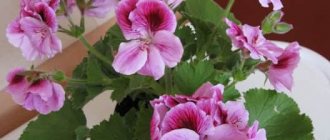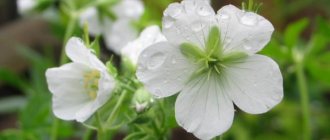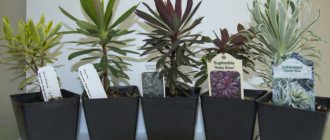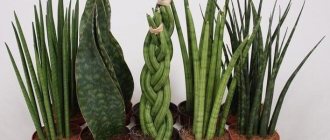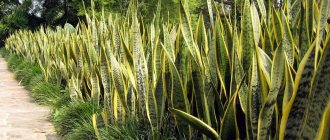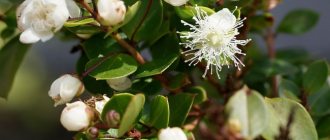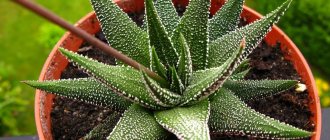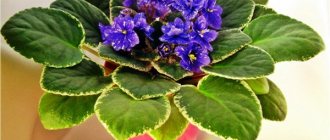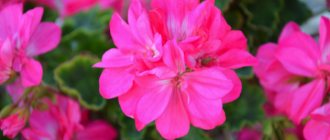Each of us, even being very far from indoor floriculture, can easily recognize and name this flower. Of course, the difficult-to-pronounce scientific name of Sansevier will not only be pronounced, but only remembered by a specialist botanist or a keen florist. It’s either a matter of “mother-in-law’s tongue” or “pike tail”! Everyone will remember these names!
This ornamental plant grows in kindergartens, schools, offices and workshops and does not require special attention and care. From what places did the pike tail move to us? Where is the birthplace of the plant - so unpretentious and decorative -? We will try to answer all questions.
How many names does he have?
Let's start, perhaps, with the official language of almost all terms - Latin. Sansevieria (sansevieria) - this is exactly what the name of this representative of the decorative fauna actually sounds like. The flower was named in honor of the philanthropist and botany lover, the Italian aristocrat Raimondo de Sangro, Prince von Sansevierio, who lived in the 18th century.
Pike tail is the name given to this plant by people who saw a pattern in the stripes on the leaves of one of the species that was similar to the color of a river predator. Another bright epithet that has taken root among us is mother-in-law’s tongue. Most likely, a parallel should be drawn here with the long tongue of the heroine of such popular jokes among us. It is difficult to find any other reason for the appearance of such a name, other than the ineradicable sense of humor of the Russian people.
However, in the search for interesting names that at least somewhat accurately characterize sansevieria, our people are not at all original. The Germans call this plant African hemp, the British - the tongue of the devil, or leopard lily, the Americans - snake skin, which indicates the popularity of the species in different countries.
Where is his homeland?
The tropics and subtropics are where the pike tail feels great and develops well. The homeland of the sansevier plant is the tropical regions of Africa, mostly its western regions. Modern researchers quite often discover new species of sansevieria in Uganda, Kenya and neighboring countries.
Today this plant is widespread in Sri Lanka and India, tropical Asia and the island of Madagascar, South Florida. As a rule, in nature, sansevieria grows in clumps, forming impenetrable thickets on river banks. It can coexist with both huge spreading baobabs and low acacias of various types and succulents. This flower can grow in any poor soil with low humidity - about 40%. That is why the pike tail tolerates conditions in which other indoor flowers cannot exist without problems.
Watering Sansevieria
Sansevieria is a drought-resistant plant, succulent. Water it lightly; the next watering should be done when the soil dries out. The plant can withstand relatively long periods without water.
When watering, you need to make sure that water does not get inside the outlet, which could rot. When the room temperature is low, Sansevieria needs to be watered less frequently; less frequent watering is also required if the plant is placed in the shade.
Sansevieria does not need spraying, but periodically you need to clean the leaves from dust using a cloth or a special broom.
Beautiful and useful
Following the Asian and African healers who widely used pike tail in their practice, the beneficial properties of this plant were also noticed in our country. Saponins (glycosides of plant origin) contained in its leaves have anti-inflammatory and mucolytic, adaptive and immunostimulating effects. In addition, scientists have found that sansevieria significantly reduce the number of pathogenic microorganisms in the air of the room where they are located, and are also able to reduce the content of harmful synthetic substances such as trichlorethylene and benzene.
Growing Sansevieria
Thanks to its external characteristics, Sansevieria is organically combined in the decor of premises , decorates the artificial landscape, and adds variety to the winter garden.
In order for a luxurious, highly ornamental plant to grow, you need to water it properly, monitor air humidity and feed it occasionally. Excess moisture harms the plant. Especially in winter, the roots can rot and lead to the death of a beautiful representative of the flora. After each procedure, you need to wait until the soil dries completely, and then moisten it again. In cool weather, watering is rare. The leaves benefit from wetting with a damp cloth.
There should be enough light for a healthy appearance. When there is insufficient light, the leaves fade, and when there is too much light, they turn yellow. It tolerates short-term placement in the shade without any problems. The best part of the territory for fruitful growth is western or eastern. In summer, the pot can be placed on the balcony or in the garden, closer to wildlife.
For a plant to grow well, it needs to be fed. Regular fertilizer for indoor flowers, namely cacti, works well in this case. The frequency of feeding is once a year. This is no longer necessary, as the individual colors of the leaves are lost: they will simply be green.
Botanical characteristics
Sansevieria, or Sansevieria, is a genus of evergreen herbaceous stemless perennial plants. According to different scientific schools, it belongs to various botanical families: asphodelaceae, agave or dracaenaceae. Such a difference of opinion is not fundamental, since this is all the lily family, but only “broken” into smaller groups. Today, the genus Sansevieria usually includes about 60-70 different species and many different varieties.
Like many other houseplants, piketail, which is native to arid tropical areas, has a well-developed underground creeping rhizome. The hard leaves form a rosette and can reach 1 meter in length (or more) in some species. As a rule, the leaf plates are pointed and can be either vertical or almost horizontal. Leaf color varies from light green to brown, with various stripes and spots. Silver- and gold-colored houseplants have become fashionable over the past few decades. The pike tail, whose homeland is in tropical countries, did not escape a similar fate: through the efforts of breeders, varieties of this plant with leaf coloring unusual for it were bred. Sansevieria flowers are pale green, collected in cylindrical inflorescences on a long and straight peduncle. In nature, a fruit-berry is formed, with 1-3 seeds, but in indoor floriculture, fruiting is extremely rare.
Application of Sansevieria
In its homeland, sansevieria is successfully used as a hedge. Its leaves contain valuable technical fiber, from which local residents used to make bow strings. Currently, in tropical countries, certain types of sansevieria are cultivated to produce this fiber. Sansevieria is also a medicinal plant. It is used to treat cystitis and inflammation of the appendages. With the help of this plant, you can increase resistance to viral and colds and enhance adaptive abilities.
Sansevieria has been grown in Europe as an ornamental plant since the 18th century, considered an unpretentious and hardy indoor plant that is suitable even for the novice gardener. In summer, Sansevieria graces man-made landscapes, as its showy leaves create the perfect backdrop for plants with small flowers or feathery leaves. This plant is used for landscaping winter gardens and creating compositional arrangements.
Variety of types and shapes
Today, in indoor floriculture, many types and forms of a flower with such an interesting name are cultivated - pike tail. The plant’s homeland, as has already been mentioned several times, is tropical and subtropical regions, but only a few species grow there, from which many modern forms were obtained.
Despite the fact that there are about 70 species of Sansevieria in nature, only about 10 are cultivated in indoor and decorative floriculture, of which the following are the most beloved:
- Sansevieria trifasciata is the most popular variety with three colors. The most common varieties among gardeners are Laurenti (with a golden border along the edge of the sword-shaped leaf), Prain (without such a border) and Craigil - with a wide cream stripe along the outer edge.
- Sansevieria grandis is a large leaf with alternating stripes of darker and lighter shades of green, edged with a thin reddish stripe.
- Sansevieria hiberica - wintering, with hard leaves decorated with reddish stripes.
- Low-growing varieties of sansevieria, such as Sansevieria hahnii silver and Hahnii golden.
Root layering
This is the easiest way to get yourself such an unpretentious flower as pike tail. The plant’s homeland is quite harsh in terms of climatic conditions, so Sansevieria, trying to occupy new habitats, forms a rather dense root shoot. This behavior is typical not only of flowers growing in the wild, but also of domesticated flowers. Usually quite a lot of shoots with roots form in the pot.
Dig up a few (along with the roots and a ball of earth) and cut them from the mother plant, then replant them in a new pot. The place from which you cut a piece needs to be dried a little and sprinkled with crushed charcoal, or regular activated charcoal.
Lighting for growing sansevieria
The plant can remain in partial shade for a long time. It is advisable to provide the flower with uniform sunlight. The brightness of the leaves and the full development of the crop depend on the length of daylight hours. If the flowerpot is located on a windowsill on the south side of the building, it is necessary to protect the sansevieria from direct sunlight.
Variegated varieties with a predominant yellow tint are less demanding on the lighting of the area than classic green representatives of the crop. For successful cultivation, you should place the potted plant near a window. Colored areas are especially susceptible to solar radiation. Therefore, it is necessary to shade the windows in a timely manner using blinds or roller shutters.
Leaf cuttings
The method is simple: take a leaf of a flower, mark it and cut it crosswise into 7-10 cm pieces. Immediately use an adhesive plaster or permanent marker to mark the bottom of each fragment. This is quite important, since they will need to be planted with their heads up. In order for the cut pieces of leaf to dry, leave them on a cool windowsill for 1-2 days. Then we plant the resulting cuttings in well-moistened sand and, covering them with a glass jar, put them in a warm, bright place. There is no need to spray the cuttings, just pour water into the tray.
Plants will take root, under favorable circumstances, in 1-1.5 months. After which the seedlings can be transplanted into a pot with garden soil or a special soil mixture for succulents.
Is the plant really easy to care for?
Sansevieria is the best plant for beginning gardeners, as caring for it at home is very simple. And if you follow some rules, then it will also delight you with flowers, bright and lush greenery and active growth. Since this plant comes from Africa, it requires a lot of light. Of course, it will tolerate both partial shade and shade, but the greenery in such conditions will not be so beautiful. But if you choose a southern window sill for it, then in the very heat it is still worth protecting the plant from the sun so as not to burn it.
The optimal location is east or west windows. If you still decide to place the flower in a shady corner, then do not forget to illuminate it with a lamp. In the summer, you can take the pots outside. To do this, choose a place not in the shade to avoid high humidity. As for air temperature, Sansevieria is also not very demanding. A warm room is better suited for her. But she can also tolerate short-term cold, down to 5 degrees. The main thing is that the temperature does not drop below 12 degrees for a long time, otherwise the plant will get sick.
It does not need excessive watering; on the contrary, due to its origin, the plant loves dry soil. Therefore, moisten the soil only when it is completely dry from the previous watering. It is also not worth using a spray bottle for these purposes. If the leaves become dusty, you can simply wipe them with a slightly damp sponge. And try not to get water into the center of the rosette from which the shoots grow, otherwise, if there is insufficient lighting, it may rot.
It is not necessary to fertilize sansevieria. For variegated representatives this is even harmful; the plant may lose its color. For other forms, you can fertilize in spring with fertilizer for cacti. The main thing is to check the presence of nitrogen in the composition; there should not be a lot of it, otherwise it will cause rotting of the roots.
The plant is replanted extremely rarely - once every few years. The only reason for this could be that the pot is too tight. If you see roots protruding from it, it means it’s time to replant it, otherwise they will simply tear the pot. Since the root system of the flower is superficial, choose shallow, but wide pots. But, if you want it to bloom, then the container should not be too loose. Flowering occurs only if the roots tightly occupy the entire space.
Since Sansevieria does not like waterlogging, be sure to lay the bottom of the pots with a thick layer of expanded clay. The plant is not at all picky about the composition of the soil, but the usual sand is often added to the soil. Sansevieria is propagated by dividing the rhizome, lateral shoots or dividing the leaf. When dividing a leaf, the properties of artificially bred varieties, mainly variegated ones, may not be preserved, so it is recommended to use the first method for them.
Root division is carried out in the spring. Depending on the size of the root, it is divided into several parts with a knife so that each part must have a growing point. The cut root is immediately planted in a pot, adding a large amount of sand, left warm and watered moderately. To propagate by leaf, take an old, large leaf. It is divided with a disinfected construction knife or razor blade into several parts 4-5 centimeters long. Leave them in the open air for a day to slightly dry out.
For the cuttings, prepare a container with compacted wet sand. If desired, you can treat the sections with a growth stimulator. We place the seedlings at a depth of about a centimeter strictly vertically, with an interval of 2-3 centimeters. To protect them from diseases, you can spray them, for example, with Fundazol. The best place for cultivation is a bright, humid room with a temperature of approximately 21 degrees, without direct sunlight. You should not cover the container with glass or film; Sansevieria does not like moisture and can rot in greenhouse conditions. Cuttings germinate in 6-8 weeks. After this, they can be transplanted into pots with soil.
As you can see, there is not much hassle with the plant. And given the variety of varieties, you can grow beautiful compositions only from Sansevieria, using different representatives of this plant.
